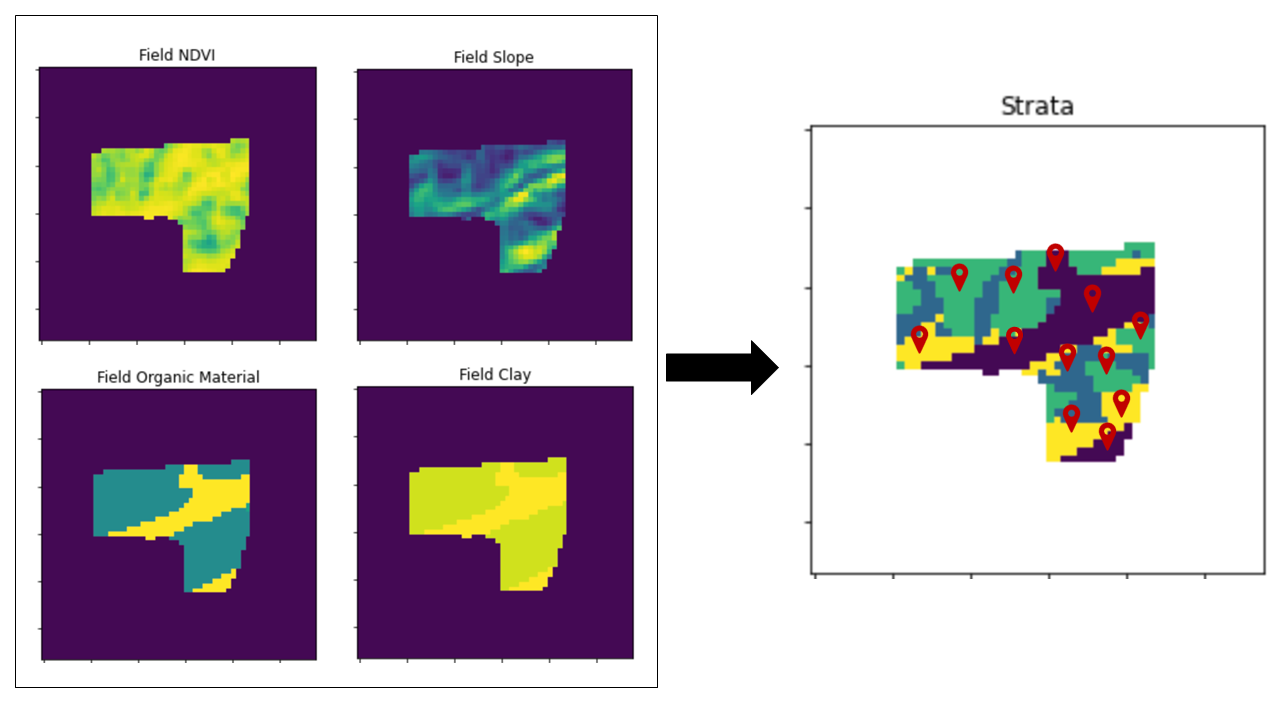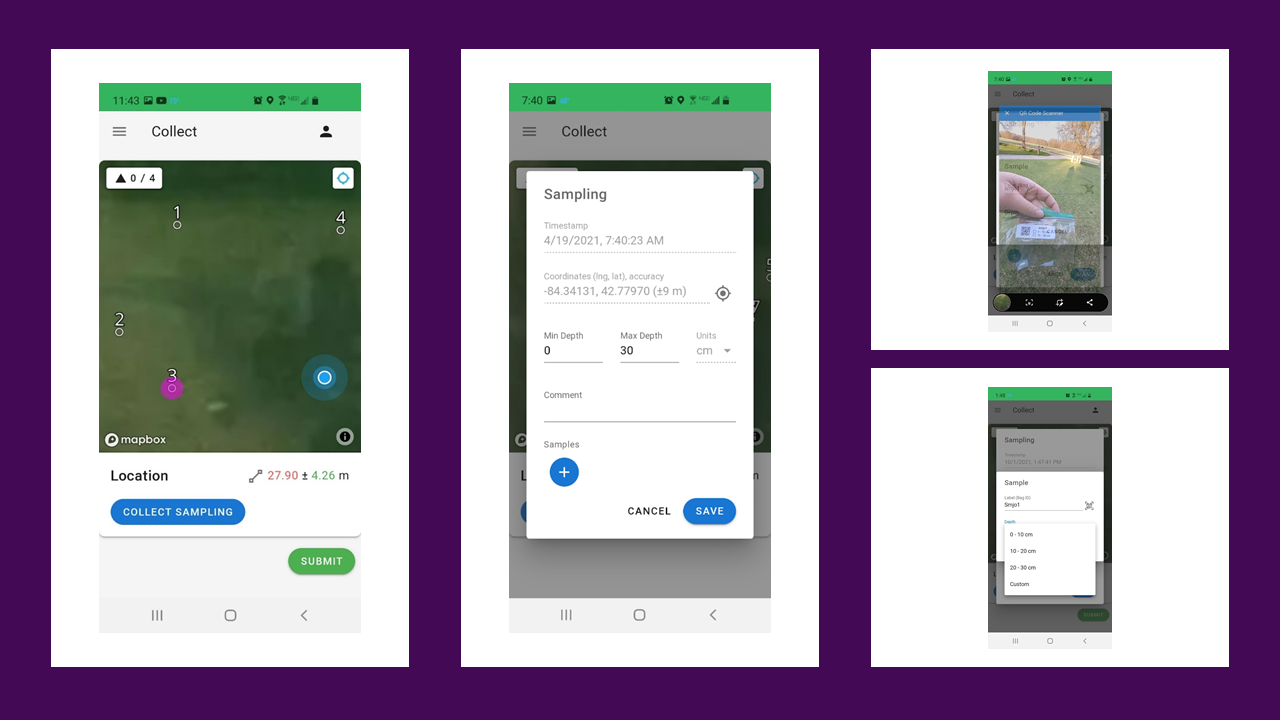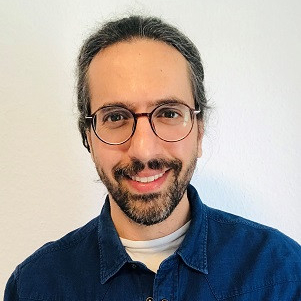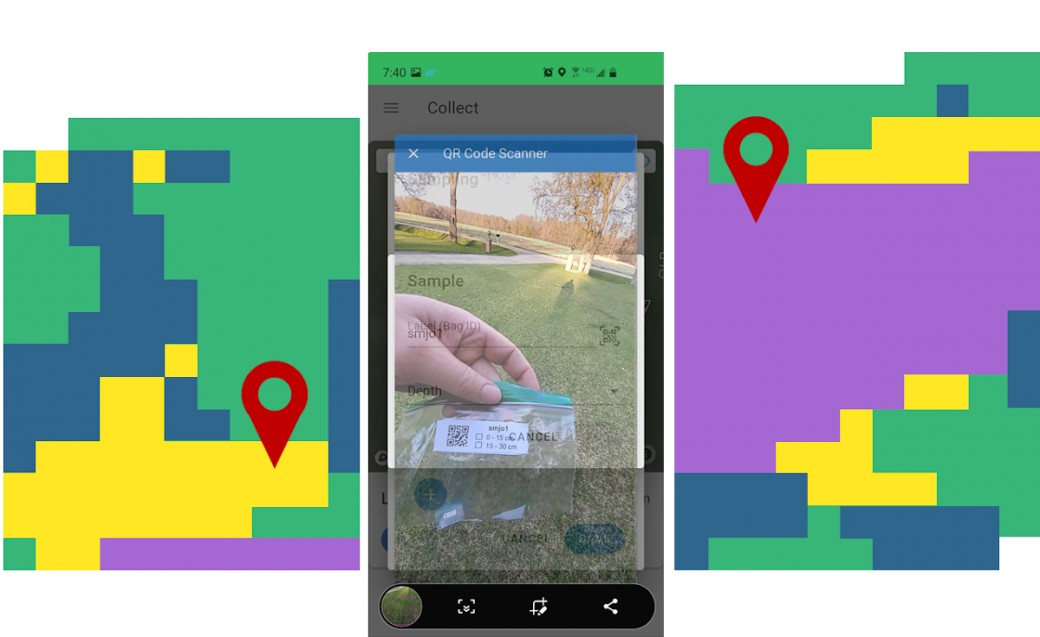“SoilStack is designed to help anyone who is collecting a high density of soil samples at pre-determined locations. That primarily includes anyone attempting to do ecosystem service or carbon accounting for markets and researchers evaluating soil carbon at the landscape scale. By enabling SoilStack to access and run SurveyStack surveys, and by working with the community to develop trusted data systems around environmental claims, users can collect interoperable data using transparent tools to complete soil health, biodiversity, or other assessments that can back up those resilience claims,” says Dan TerAvest, cofounder of Our Sci.
Dan TerAvest spent most of his early career working in agriculture for development settings. First as an environmental volunteer in rural Tanzania with the Peace Corps. Then, while pursuing his PhD in Soil Science at Washington State University, Dan conducted on-farm research on conservation agriculture practices in Malawi. Finally, as a postdoc with the PhotosynQ project at Michigan State University (MSU), where he coordinated numerous research projects across sub-saharan Africa and South America.
At each of these stops, the lack of appropriate and affordable tools hindered the ability of local scientists to conduct meaningful research. While at MSU, Dan met Greg Austic and Manuel Di Cerbo, with whom he cofounded Our Sci, who were both open-source advocates. “I have always been interested in improving the accessibility of tools. To me, open source is way of ensuring that accessibility is always a part of the equation,” says Dan. Since founding Our Sci, the team has been able to focus on building tools that Dan knows will be accessible to communities. “Its so fun to meet and work with so many interesting and diverse communities that just want to help solve problems every day.”
You are welcome to contact Dr. Dan TerAvest with your professional interest in SoilStack.
28 September: Meet with Dr. Dan TerAvest to learn how Our Sci can support Smart Accounting for Improved Ecosystem Services & Climate Resilience on landscape and city scale
Sebastian Klemm: What is the contextual gap that you identified and which your SoilStack solution can bridge?
Dan TerAvest: There is a lot of interest, and potential, in using agricultural soils to sequester atmospheric carbon. There are many projects being launched to speed up that process by paying farmers to adopt practices that build up soil carbon or improve ecosystem services, such as water quality. To do that, you need to account for how much carbon is in the soil before farmers adopt new practices, and then measure how soil carbon levels change in subsequent years. Unfortunately, quantifying soil carbon at the landscape scale can be very expensive. Soil carbon can vary greatly at small scales (1-10 meters), which makes it difficult to collect enough soil samples to accurately quantity it in a field at the 10–100-acre scale.
If, before we head to the field to collect samples, we select sampling locations with that variability in mind, we could significantly reduce the cost of quantifying carbon thereby reducing the transaction costs of participating in these markets. Data about that variability is publicly available, in the form of national soil maps, digital elevation maps and satellite imaging of agricultural spaces. The problem is, its scattered around different places, in different forms, making it hard for people to access it. Once people have that data, they run algorithms in R or Python to model variability and output a series of points where soil samples should be collected.
The first gap that SoilStack bridges is automating that process, from fetching soil, elevation, and satellite data, clipping it to a field boundary to running a stratification algorithm that outputs sampling points.
The second gap that SoilStack bridges is to support soil samplers in navigating to each of those sampling points and collecting key sampling information, such as GPS waypoints, timestamp and scanning the QR code on the sample bag.

Sebastian Klemm: Which user groups can SoilStack serve effectively?
Dan TerAvest: SoilStack is designed to help anyone who is collecting a high density of soil samples at pre-determined locations. That primarily includes anyone attempting to do ecosystem service or carbon accounting for markets and researchers evaluating soil carbon at the landscape scale. The primary users today are the Ecosystem Services Marketplace Consortium and OpenTEAM in the USA and Carbofarm in Europe.
Sebastian Klemm: What makes SoilStack smart, userfriendly and relatively inexpensive?
Dan TerAvest: I think the number one attribute of SoilStack is its efficiency. It integrates every step of the stratification and sampling chain into a single platform. Right now, there are tools to achieve portions of the work, but users are forced to conduct the stratification in R or python, push the GPS locations into another software tool to guide samplers to the points in the field and then use other programs to capture the in-field sampling data.
Every time data gets passed from one software tool or platform to another opens up opportunities for data errors and increases the cost of quality reviewing the outputs. In Carbon and Ecosystem Service markets, payment to producers is affected by the uncertainty of soil carbon estimates. So, those data errors, or lack of transparency in how the data was generated or managed, can increase uncertainty and reduce payments to producers.
SoilStack allows users to handle every step of the process, capturing key information about methods and outcomes along the way, in a single, open source and transparent tool chain. Also, because we are developing SoilStack in partnership with numerous carbon and ecosystem service marketplaces, we are able to prioritize features that improve the user experience and reduce uncertainty.
The SoilStack app

Sebastian Klemm: How do you facilitate clients to set up SoilStack and implement it into their operations?
Dan TerAvest: Because SoilStack is new and still under development, we are much more hands-on in setting up and assisting users then we hope to be a year from now. Currently, we create user groups for our partners, show them how to use the admin tools and we perform turnkey stratification services. So, our partners provide us with field boundaries, we stratify the fields to generate sampling points, and then train soil samplers so they can collect the samples in SoilStack.
Over time our goal is to automate all or most of the processes so organizations can do the work themselves with a SoilStack subscription, at a much lower price point.
We are developing SoilStack in incremental steps because carbon and ecosystem service markets are new and standards around stratification and soil sampling protocols are still being developed. By adding features in partnership with different actors in these markets we have the flexibility to respond quickly if site selection or sampling protocols change.
Sebastian Klemm: Last summer you collaborated with OpenTEAM hub farms, testing calibrations and integrations to make SoilStack work for their growers and research partners. By which examples can you describe the effectiveness of “SoilStack” on the part of the involved users?
Dan TerAvest: As I previously mentioned, developing SoilStack incrementally helps us identify features that can have the biggest impact. Conducting reviews with each beta-tester from last year has helped us identify our development priorities for 2022. This is especially important because we have different sets of users interacting with SoilStack at different levels.
Talking with soil samplers helps us understand what tweaks to the UX can be made to save time or reduce errors in the field, which will help increase uptake of the platform.
At the marketplace level, the focus is on automating data flows. One of the biggest challenges in this regard is matching up the soil data that comes back from a soil lab with the sampling data collected in the field (GPS waypoint and sample bag ID). We are seeing that when a pilot project used SoilStack to generate sample points and collect in-field sampling data, it was very easy to merge data from soil labs with field sampling data and the prescribed sampling points. In these cases, the cost of data management was low, we can easily see how close to the actual sampling locations were to the target locations and we can get the data into the hands of modelers very quickly. However, when a pilot project used SoilStack to generate sample points and then used other tools to collect sampling data, it has been difficult and time-consuming to match up target and actual sampling locations and merge that data with soil lab data.
Sebastian Klemm: Biodiversity, water filtration and more: Digging into soil characteristics can account for even more indicators beyond captured carbon. Which further indicators and attached use cases do you plan to apply SoilStack for in the near future?
Dan TerAvest: We have also developed another data collection tool called SurveyStack. In SurveyStack we are currently building out question sets that allow users to drag and drop field measurement protocols into different surveys. For example, a 10-question visual assessment of forage quality in a pasture or rangeland, an in-field measurement of water infiltration or other soil health measurements, or biodiversity assessments.
This year, with support from OpenTEAM, we will build an integration between SoilStack and SurveyStack that will allow users to run SurveyStack surveys in the field through the SoilStack app. That way, when a user arrives at a pre-selected sampling point using SoilStack, they can collect soil samples and complete one or more of these protocol question sets.
SurveyStack is an incredibly flexible platform, so allowing users to run any survey from SoilStack enables the app to be used for pretty much any application that requires a user to arrive at a pre-determined location.
Sebastian Klemm: Nature dependencies, biodiversity loss, and material risks: Research underlying the 2020 Global Risks Report shows that $44 trillion of economic value generation – over half the world’s economic output in terms of total GDP – is moderately or highly dependent on nature and its services. How can SoilStack help to account for ecosystem services and have natural capital inform financial decisions?
Dan TerAvest: Let’s say that an insurance company or a bank felt that farms with better soil health were more climate resilient and would offer them lower premiums or interest rates compared to farms that were viewed as less resilient. How do we measure resilience? How would we have confidence in the data generated by those measurements?
By enabling SoilStack to access and run SurveyStack surveys, and by working with the community to develop trusted data systems around environmental claims, users can collect interoperable data using transparent tools to complete soil health, biodiversity, or other assessments that can back up those resilience claims.
28 September: Meet with Dr. Dan TerAvest to learn how Our Sci can support Smart Accounting for Improved Ecosystem Services & Climate Resilience on landscape and city scale
Contact Dr. Dan TerAvest with your professional interest in SoilStack
Read more about SoilStack from Victoria Cox at Our Sci






